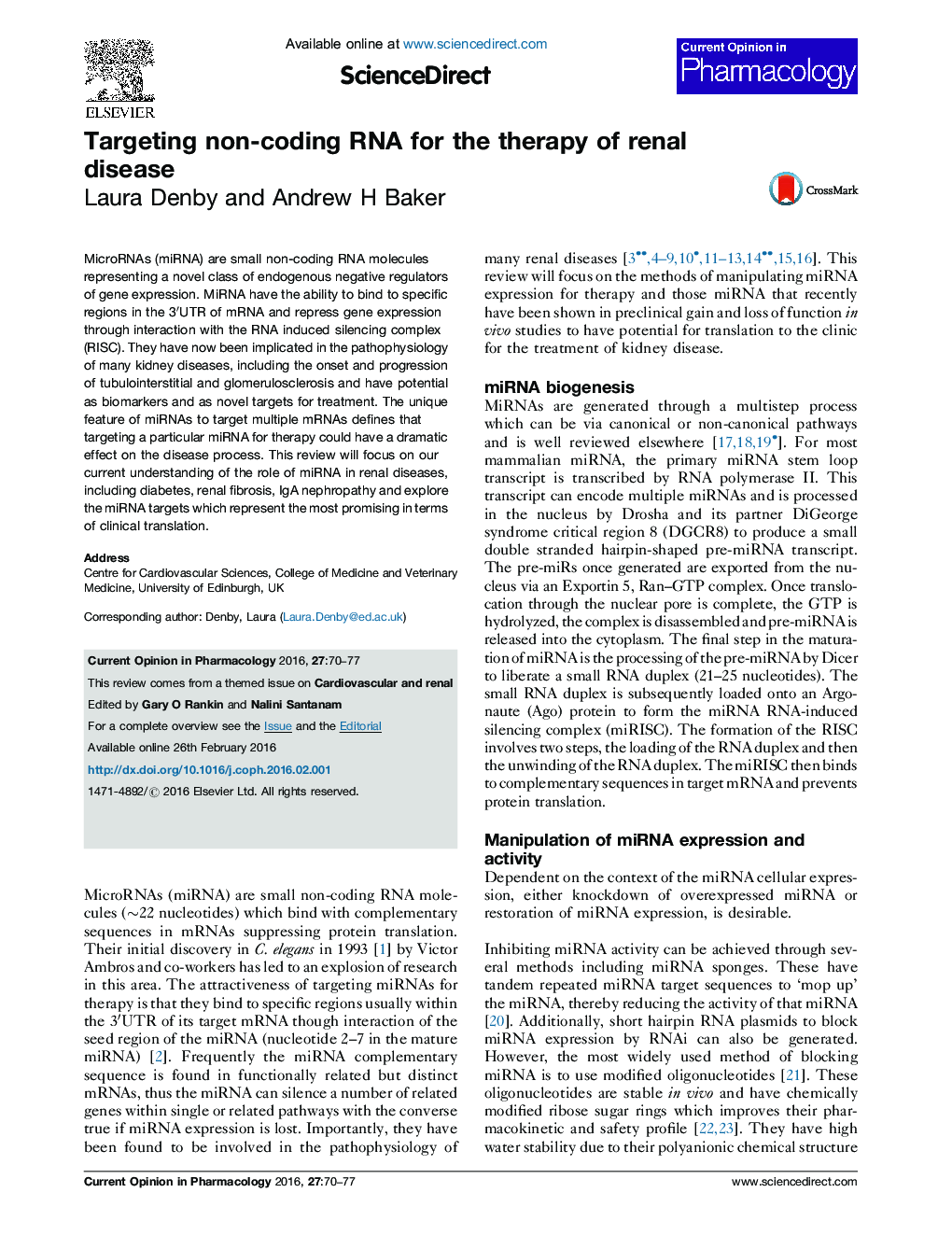| Article ID | Journal | Published Year | Pages | File Type |
|---|---|---|---|---|
| 5825920 | Current Opinion in Pharmacology | 2016 | 8 Pages |
â¢MiRNAs are involved in the pathophysiology of multiple kidney diseases.â¢MiRNAs have several features which make them attractive therapeutic targets.â¢Pharmacological inhibition of miRNA affects disease networks.â¢Lack of cell specific expression of many miRNAs poses the risk of off target effects.â¢Greater understanding of the effect of long-term modulation of miRNAs is required.
MicroRNAs (miRNA) are small non-coding RNA molecules representing a novel class of endogenous negative regulators of gene expression. MiRNA have the ability to bind to specific regions in the 3â²UTR of mRNA and repress gene expression through interaction with the RNA induced silencing complex (RISC). They have now been implicated in the pathophysiology of many kidney diseases, including the onset and progression of tubulointerstitial and glomerulosclerosis and have potential as biomarkers and as novel targets for treatment. The unique feature of miRNAs to target multiple mRNAs defines that targeting a particular miRNA for therapy could have a dramatic effect on the disease process. This review will focus on our current understanding of the role of miRNA in renal diseases, including diabetes, renal fibrosis, IgA nephropathy and explore the miRNA targets which represent the most promising in terms of clinical translation.
